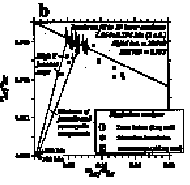most basaltic and andesitic lavas, yet it is rarely studied in sufficient detail to characterize its behavior with respect to argon. In part, this may be because early studies suggested that excess argon is a common and possibly unavoidable problem. We have conducted an incremental degassing experiment on a relatively large, 104 mg, bulk sample of plagioclase phenocrysts and twenty laser total-fusion analyses on much smaller, 2 mg aliquots from the same sample. The plagioclase was separated from an andesitic lava erupted during the Matuyama-Brunhes geomagnetic polarity reversal, hence the eruptive age is extremely well constrained. The experimental results illustrate that: (1) the plagioclase contains an inherited component much older than the 778±7 ka groundmass from which it was separated, (2) The quantity of older contaminant crystals is quite small, perhaps <0.05% of the total phenocryst abundance, (3) the
contaminant is probably older than about 100 Ma; this age far exceeds that of any basement rocks exposed in the central Chilean Andes, and (4) plagioclase xenocrysts may retain significant quantities of radiogenic argon during entrainment in andesitic magma at temperatures in excess of 1000oC. Estimates of the age and isotopic composition of the contaminant together with models approximating the fractional diffusive loss of radiogenic 40Ar from a ~1 mm diameter xenocryst may provide broad constraints on the time scale of andesitic magma ascent through the continental crust. The low K/Ca ratio of the contaminant suggests that its crystals may be more calcic than juvenile phenocrysts. Petrographic and microprobe studies indicate, however, that such a contaminant will be extremely difficult, if not impossible, to detect a priori. Where high-precision age determinations are required, the practice of analysing young plagioclase-rich whole-rock samples of arc lavas is not encouraged.

